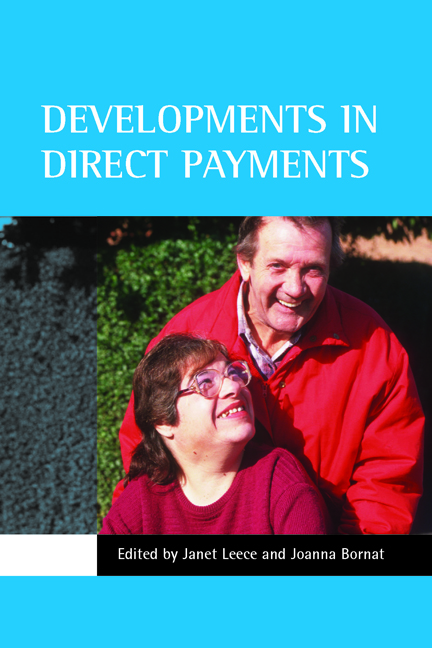Book contents
four - North American approaches to individualised planning and direct funding
Published online by Cambridge University Press: 18 January 2022
Summary
North America, unlike many Western countries, has a long history of service reform for people with different disabilities. Since the 1960s, complex community service systems have evolved, and many large institutions have closed. In Canada and the US, this extensive array of community-based programmes and rehabilitation services was originally based on what is known as the continuum model. In this approach, a range of services are offered from the most restrictive, such as a large residential care home, to the least restrictive, such as a supported independent living apartment. The assumption was that people would be able to progress through the continuum relatively quickly and that no one would get ‘stuck’ at the more restrictive end (Wieck and Strully, 1991).
In the early 1980s, there was growing awareness of the limitations of the continuum model and the rehabilitation approach as a foundation for the provision of disability supports. Users and families found that community services that placed people into programmes promised far more than they delivered. The reality was that many people were isolated, congregated in large groups with other labelled people, stuck at the restrictive end of the continuum, and experiencing very little genuine community (Pedlar et al, 2000).The desire for a better quality of life grew as a response to these limitations and as a way to further community inclusion (Renwick et al, 1996).
Individualised planning and direct funding have evolved as cornerstones of a new paradigm of disability supports for citizenship and inclusion. For more than 25 years, this new stage of service reform has been underway in Canada and the US. This chapter explores the relationship between the concepts of individualised planning and direct funding within North America by drawing on recent innovations across North America, the authors’ extensive experience with direct funding projects, and research from a cross-site study conducted by two of the authors.
Evolution of supports for citizens with disabilities
The traditional community service delivery system that evolved in the 1960s and 1970s for people with disabilities in Canada and the US has many features:
• funding for disability supports is available only to agencies and not directly to individuals;
• services are provided in congregate settings, rather than being individualised;
- Type
- Chapter
- Information
- Developments in Direct Payments , pp. 49 - 62Publisher: Bristol University PressPrint publication year: 2006
- 1
- Cited by



